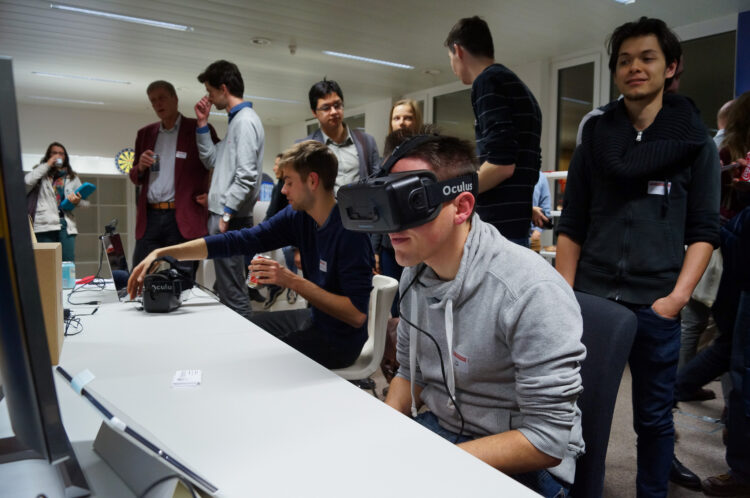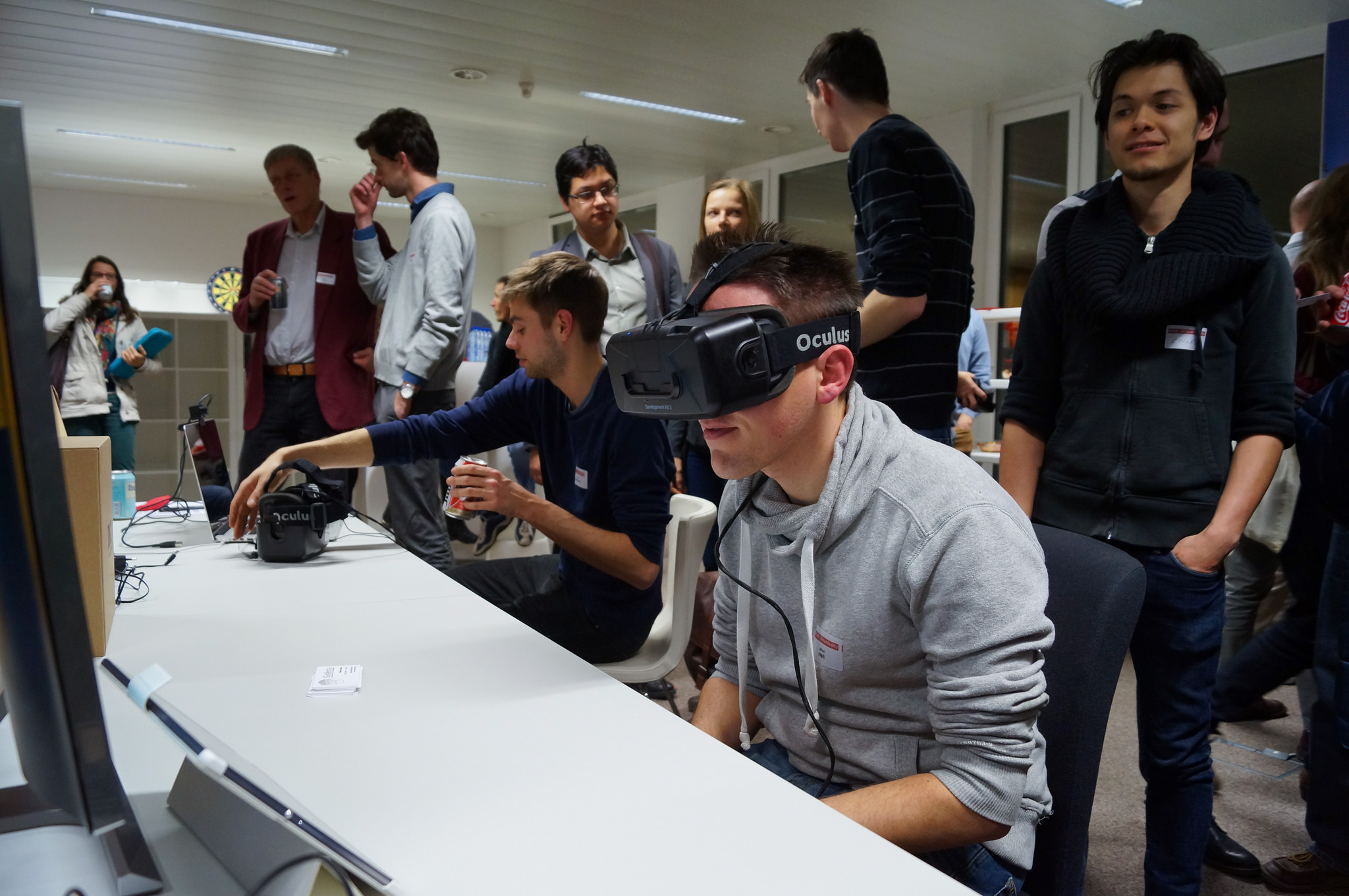If you were at CES recently – or even just following it on the Internet – you probably heard the same breathless mantra repeated over and over: 2016 is the year of VR. The signs are good. Despite a higher-than-anticipated $600 price point, shipping for Oculus Rift pre-orders got backed up until June in less than a day. Playstation VR and HTC Vive preorders are set for the first half of this year. It’s not just the bleeding-edge crowd either: The New York Times sent out one million Google Cardboards to its print subscribers with the launch of its VR app in October.
2016 will be a big year for virtual reality, no doubt. But “the year of VR” will be the year that mass-market Americans count a VR headset alongside their TVs, tablets, and gaming consoles as an essential part of their living room. That’s a tall order, and one that’s not likely to be achieved right away. Still, the interest is there: roughly half of video game players (who now make up three-quarters of the general US population) say they are interested or very interested in VR, and over 70% of those express interest in VR gaming content. Fittingly, Oculus, HTC, and Sony are all pinning their early adoption hopes on hardcore gamers by focusing squarely on their devices’ gaming capabilities.
CES whipped the conversation about VR gaming’s promise to a fever pitch. But the chatter misses the real key to virtual reality’s mainstream potential. Among those gamers interested in VR, significant numbers also want TV and movie content (66%), music videos (41%), travel content (39%), and sports content (38%). A whopping 90% of VR-interested gamers desire non-gaming content in general. Virtual reality’s mass-market viability will depend on meeting this demand for non-gaming VR entertainment – especially when it comes to high-end premium VR devices. So why isn’t that the conversation du jour?
The issue is that, at the moment, VR video content is limited to what’s being provided by simple, mobile-oriented devices like Google Cardboard and Samsung Gear. That’s not a bad thing, as low barriers to entry mean consumers can get their first taste of VR without much cost or effort, while budding VR video creators have a growing audience for testing out new styles of content. In that way, Google Cardboard and Samsung Gear are essentially VR’s gateway drug. The experiences these devices offer aren’t necessarily comparable to the Oculus Rift or HTC Vive – it’s like putting a tube TV up against a brand new 4K. Premium VR offers a quantum leap forward in terms of viewing experience.
Of course, getting most consumers to upgrade to premium VR will require enough great content to warrant shelling out $600 on unproven technology. Creating that content won’t be a quick or easy process. Just as the best developers in gaming are still working on console and PC projects, most top-notch video producers are still using traditional cameras. But it’s the companies that can put VR video technology in the hands of brilliant storytellers that will push VR from techie niche to commonplace entertainment.
The New York Times got the ball rolling with its experiment in premium journalism VR content. Cutting-edge production studios like Jaunt and RYOT don’t just aspire to make VR videos – their goal is cinematic experiences that bring big studio know-how to new frontiers of filmmaking. Los Angeles- based VRideo wants to be the YouTube of VR video, and it’s even hosting its own film festivals. Then there’s Baobab Studios, a firm founded by ex-Zynga and Dreamworks animators looking to forge new ground in computer-animated VR storytelling.
Now traditional content producers, like TV networks and Hollywood, are lining up to invest. Disney led a $65 million funding round for Jaunt in September, while Baobab just netted $6 million in funding from Comcast, HTC, and Peter Thiel. In November, Comcast and Time Warner backed live-streaming start-up NextVR to the tune of $30.5 million. And more and more traditional media producers are beginning to produce their own VR content, including Fox, NBCUniversal, and Disney.
For these companies and others, it won’t just be about making immersive, beautiful video content. It will be about doing that in a VR-native manner that recreates the entire viewing experience. Demand for long-form TV and movie content runs up against VR manufacturers’ current advice to take 10-minute breaks from using a headset every half an hour. To that aim, Disney is currently experimenting with 5-10 minute videos rather than longer films.
Leading VR platforms will have to be open to this and other ambiguities. If they are, 2016 could indeed be a huge year for VR. But the same will have to be true for developers and content creators. They have a big task ahead of them: creating the incredible experiences that will come to define VR. If they can, thinking of VR as a gaming platform may quickly become a thing of the past.
Image credit: CC by GregMADIS0N



